Indian Creek Fungi
Much
of the information on this page was taken from
http://www.mushroomexpert.com/ and
http://tomvolkfungi.net//
All photos were taken by Jim Russell and Helen Mogill.
http://www.perspective.com/nature/fungi/ is another interesting source of mushroom information. It starts out: ‘In addition to the beauty of mushrooms, fungi provide a critical part of nature's continuous rebirth: fungi recycle dead organic matter into useful nutrients. Sometimes the fungus doesn't wait for the biomatter to die, in which case the fungus is called a parasite.”
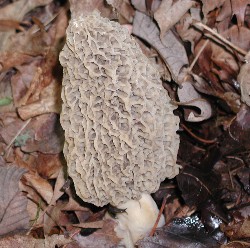
photo by Helen Mogill
Many people are avid morel hunters, with many theories about when and where they can be found. “One cannot reasonably question the validity of the theory that morels are frequently prompted by dead and dying elm trees; so many reports of this phenomenon have been made for so many years.”
Interestingly, we (Helen and Tim) had about two dozen morels in our side yard in 2002 or 2003 (on near left). It happened to be the year an elm tree died in those woods. We had not seen the morels before, and we did not see them again until the spring of 2006, when the one in the photo on the far left appeared.
.
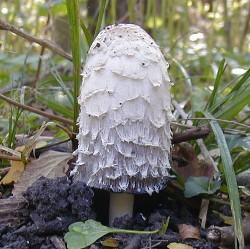
photo by Jim Russell
SHAGGY MANE
(Coprinus
comatus)
The shaggy mane, also know as the “lawyer’s wig”, is a cylindrical mushroom when young, turning quickly to a black liquid, called deliquescing, as they mature. They are found mostly in grassy areas or long trails in the woods in late summer through early fall.
They use a process of self-digestion to release their basidiospores. After the lowest spores have matured and been released, the gill tissue digests itself and begins to curl up, allowing easy release of the basidiospores above. In other words, the digestion opens up the fruiting body so that spores from further up the gills become exposed to the air and a clear path of spore release. The self-digestion continues until the entire fruiting body has turned to black ink. In the olden days this ink was actually used for writing.
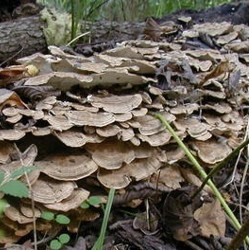
photo by Jim Russell
TURKEY TAIL
(Trametes versicolor)One of the most common fungi to be found in the woods is Trametes versicolor, the turkey tail fungus. The common name come from the banding pattern on the fruiting bodies that resembles (in miniature, of course) the tail of a strutting turkey. The colors of the bands can be quite variable, depending on the genetics of the organism and its environment. Most of the bands are dark to light brown in color, alternating with light colored bands of white to tan, with still more bands of blue, orange, maroon, and other. The can be strikingly beautiful, and are among the most easily found fungi.
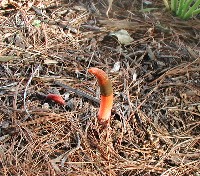
photo by Helen Mogill
STINKHORN
Mutinus elegans
These distinctive mushrooms have a single, unbranched, erect stalk, sometimes gaudily colored, leading to Linnaeus aptly placing them in a genus he called Phallus . The stalk is slimy, especially toward the tip, where the spores are concentrated.
The mushroom spreads its spores, which are present in the slime, by attracting flies and other creatures that like decaying flesh. The slime sticks to the insects, which then transport the spores.
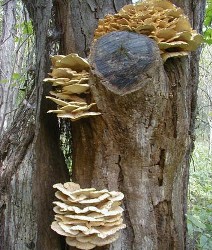
photo by Jim Russell
CHICKEN MUSHROOM
(Laetiporus sulphureus)
or Chicken of the WoodsChicken mushroom can grow alone or, more typically, in large clusters on decaying logs and stumps of hardwoods and conifers; summer and fall, rarely in winter and spring; widely distributed as a species cluster. Aside from the fact that they are attractive and interesting mushrooms, they are of special interest to humans because they are wood rotters, assisting in the decomposition of dead wood--and, in many cases, causing rot as pathogens on living wood. Thus the appearance of Laetiporus sulphureus on a living tree, probably signifies the beginning of the end for the tree; inspection of the wood would reveal a reddish brown rot of the heart wood, caused by the mushroom's mycelium.
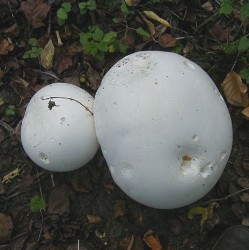
photo by Jim Russell
GIANT PUFFBALL
(Calvatia gigantea)The giant puffball, Calvatia gigantea, is easily recognized by its size and shape. Typical specimens are about the size of a soccer ball, and more or less round. However, it can be much larger (a 5-foot, 50-pound specimen is on record!), and its shape can be more "blob-ish" than round, especially when it attains enormous sizes. They are terrestrial; growing alone or gregariously in grass--often at the edges of meadows, in drainage ditches, or under brush; late summer and early fall.
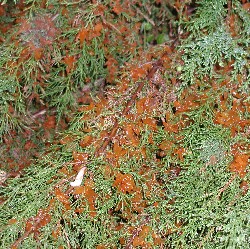
photo by Helen Mogill
CEDAR-APPLE RUST
(Gymnosporangium juniperi-virginianae)In April, 2005, we had a juniper tree infected with Cedar-Apple Rust. The rust alternates years between juniper trees and certain types of deciduous trees. It doesn't seriously affect the juniper tree, but can cause defoliation of apple, crab-apple, pear and other pome trees, as well as hawthorn, mountain ash, and juneberry.
The spores of the rust can travel up to 2 miles, so it is wise to spray any apple or crab apple trees that you have, both the year the rust is found on the juniper, and also the following year.
Here's a web sites about cedar-apple rust:
http://gardenline.usask.ca/fruit/rust.html
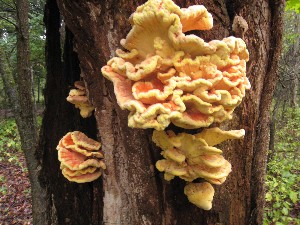
photo by Helen Mogill
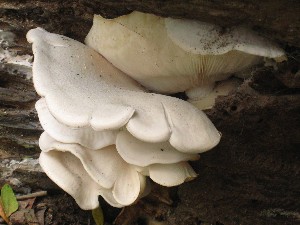
photo by Helen Mogill
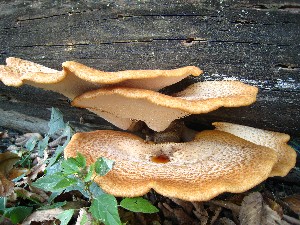
photo by Helen Mogill
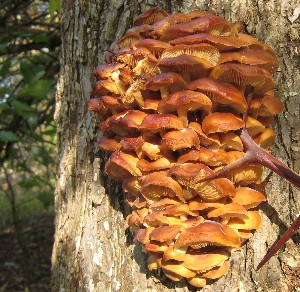
photo by Helen Mogill
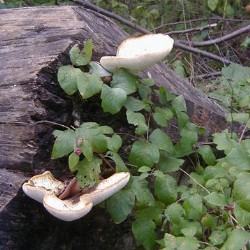
photo by Jim Russell
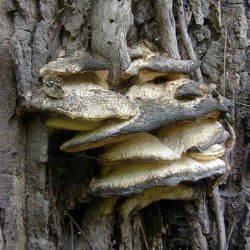
photo by Jim Russell
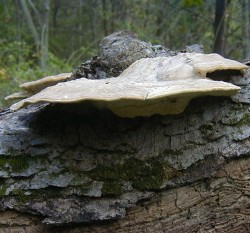
photo by Jim Russell
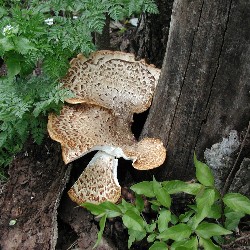
photo by Helen Mogill
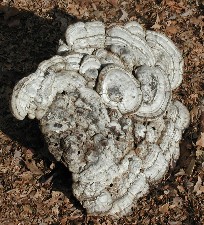
photo by Helen Mogill
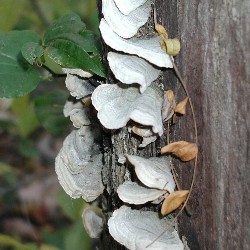
photo by Helen Mogill
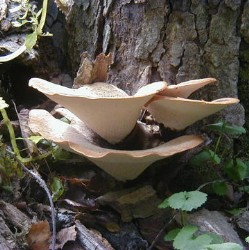
photo by Jim Russell
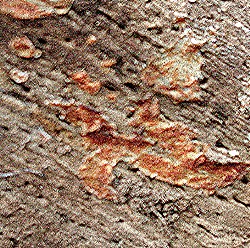
photo by Helen Mogill
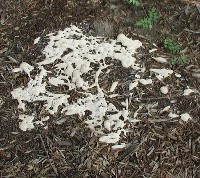
photo by Helen Mogill
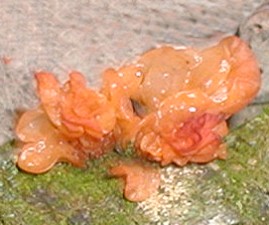
photo by Helen Mogill
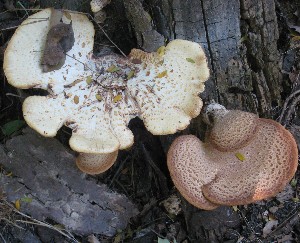
photo by Helen Mogill
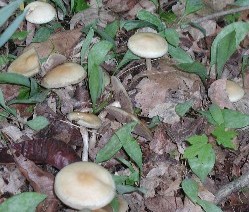
photo by Helen Mogill
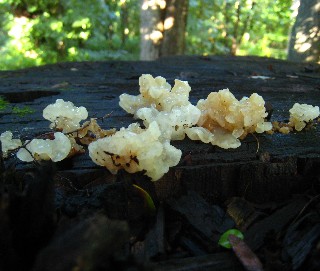
photo by Helen Mogill
|
Home Burning Bylaws Covenants History Maps Newsletters Phones Septic Recycling Water Aerial Animals Birds Bluebells Fungi Gardens Invasives Pets Streets Trail Trees Wildflowers |
This page was last updated Wednesday February 15, 2012.